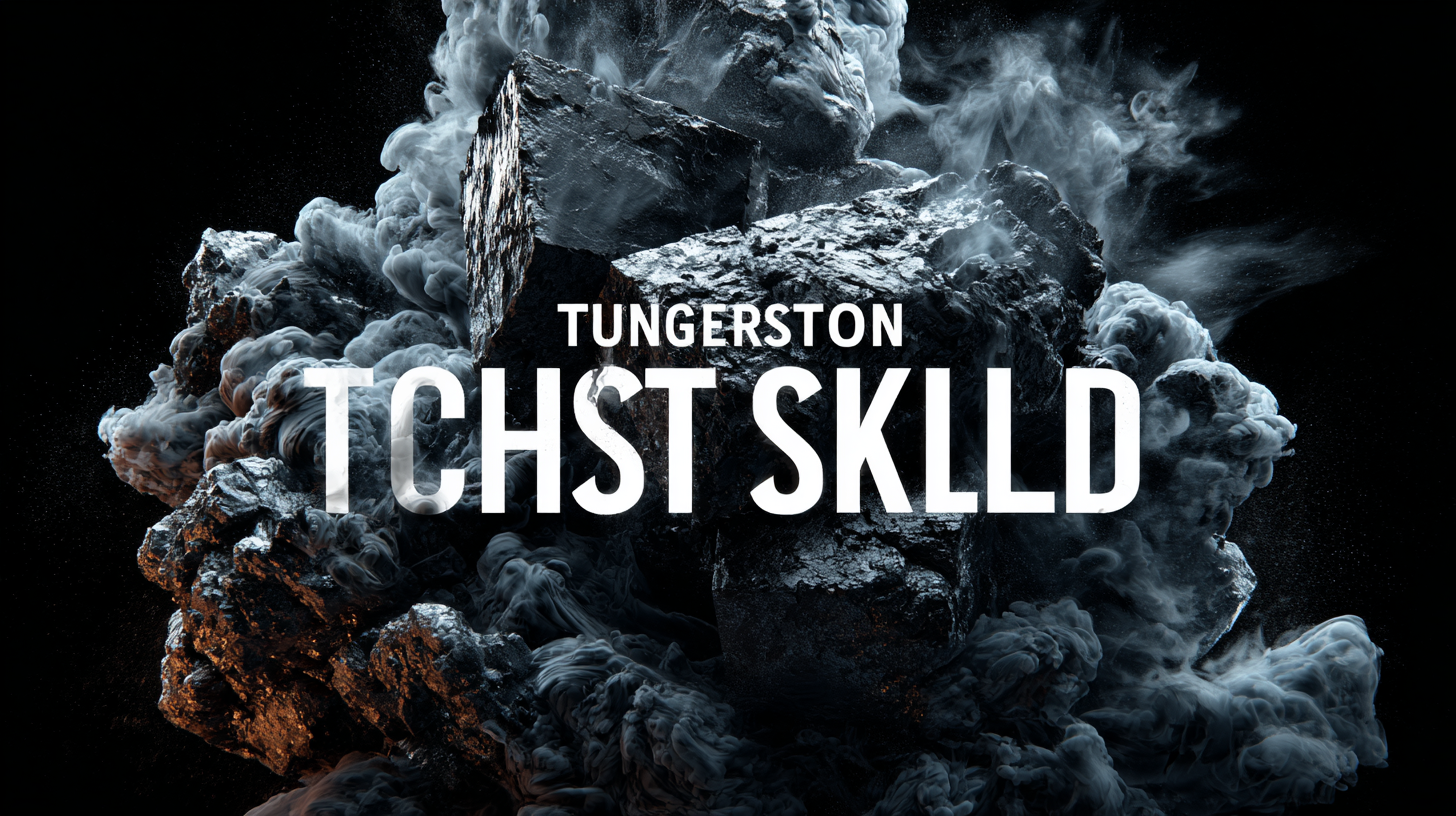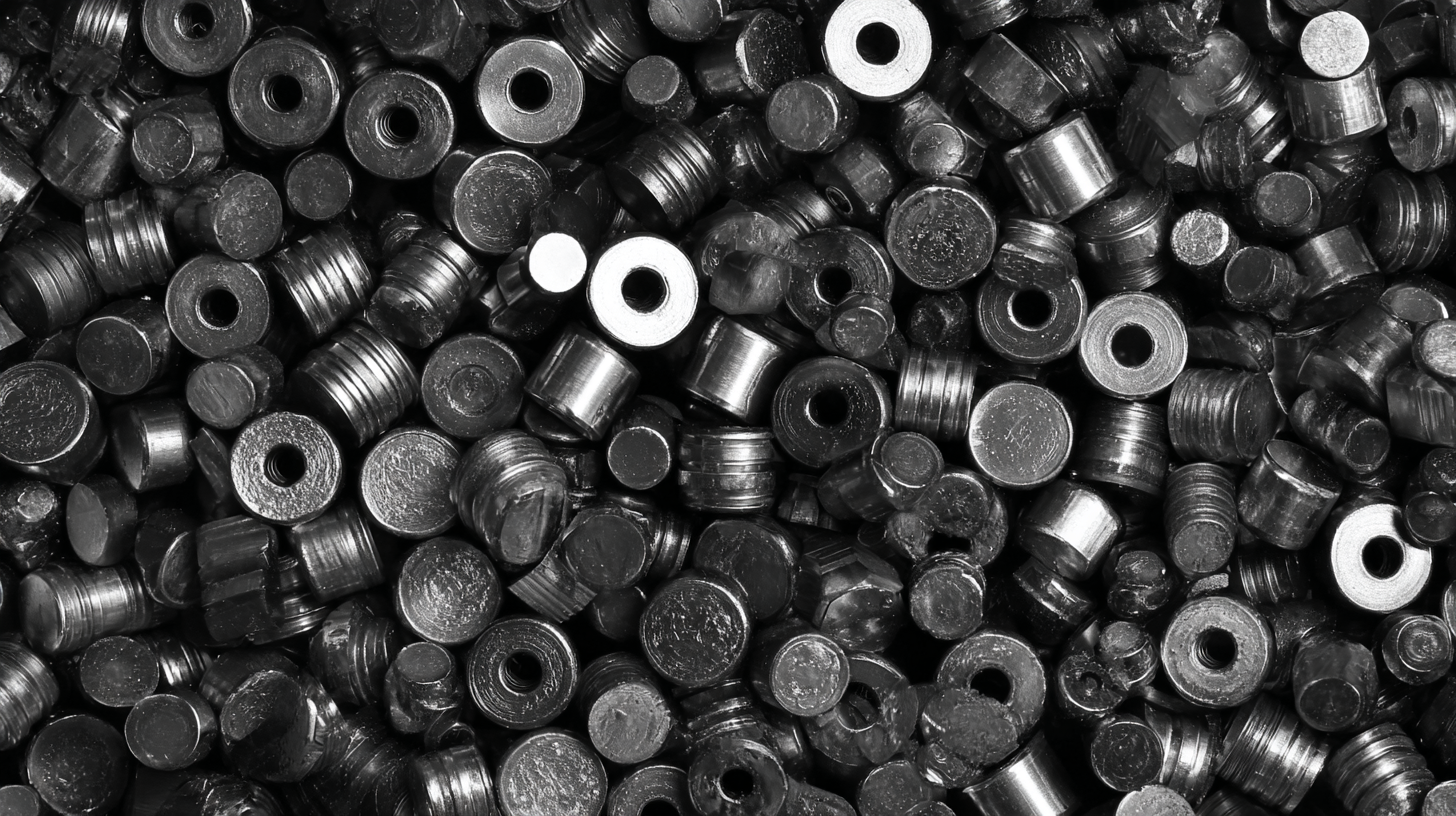Leave your message now to get your free sample and discount price
Leave your message now to get your free sample and discount price
In the ever-evolving landscape of manufacturing and materials science, Tungsten Solid products are gaining significant attention due to their remarkable properties and versatile applications. According to a recent market analysis by Grand View Research, the global tungsten market is projected to reach USD 4.08 billion by 2026, fueled by the growing demand in industries such as electronics, aerospace, and medical technology. As companies increasingly seek durable and high-performance materials, Tungsten Solid products stand out for their exceptional density, high melting point, and resistance to corrosion. However, sourcing these products can be challenging, given the complexity of tungsten supply chains and quality variations. This blog will provide an essential checklist to help businesses identify and secure the best Tungsten Solid products globally, ensuring they harness the full potential of this critical material in their operations.

Tungsten solid products are renowned for their exceptional properties, making them indispensable across various industries. One key feature of tungsten is its exceptional density, which allows it to provide substantial weight in a compact form. This makes tungsten solid products ideal for applications where space is limited but weight is critical, such as in aerospace and automotive industries. Additionally, tungsten boasts a high melting point, which enhances its suitability for high-temperature environments, such as in manufacturing processes or specialized equipment.
Another significant advantage of tungsten solid products is their outstanding resistance to corrosion and wear. This durability contributes to a longer lifespan for tools and components, reducing the need for frequent replacements and maintenance, thus translating to cost savings over time. Furthermore, tungsten's non-toxic nature adds to its appeal in applications where purity and safety are paramount, such as in medical devices and food processing. Understanding these key features and benefits is essential for businesses looking to source the best tungsten solid products globally, ensuring they make informed decisions that align with their operational needs.
| Feature | Description | Benefits | Application Areas |
|---|---|---|---|
| High Density | Tungsten has a density of 19.25 g/cm³, making it ideal for weight applications. | Provides compactness and mass in a small volume. | Counterweights in aviation and racing industries. |
| High Melting Point | Melts at 3422°C (6192°F), highest of all metals. | Resists deformation and maintains performance at high temperatures. | Applications in aerospace and military equipment. |
| Corrosion Resistance | Exceptional resistance to oxygen and acids. | Increases longevity and reduces maintenance costs. | Chemical processing and nuclear applications. |
| Ductility | Can be drawn into wires and shaped into various forms. | Versatile for different manufacturing processes. | Used in electrical contacts and filaments. |
| Machinability | Can be machined effectively, though carbide tools are recommended. | Allows for precise component manufacturing. | Fabrication of specialized tools and medical devices. |
 When sourcing tungsten solid products globally, particularly from China, it's essential to implement strategies that ensure reliability and quality. China holds a significant position in the tungsten industry, producing over 80% of the world's tungsten supply, according to a 2021 report from the US Geological Survey. This dominance highlights the necessity of finding trustworthy manufacturers who can provide high-quality tungsten products that meet global standards.
When sourcing tungsten solid products globally, particularly from China, it's essential to implement strategies that ensure reliability and quality. China holds a significant position in the tungsten industry, producing over 80% of the world's tungsten supply, according to a 2021 report from the US Geological Survey. This dominance highlights the necessity of finding trustworthy manufacturers who can provide high-quality tungsten products that meet global standards.
To navigate the vast market, evaluating manufacturers based on certifications, production capacity, and past performance is crucial. A 2022 survey by Statista revealed that 67% of companies in the manufacturing sector prioritized quality assurance when selecting suppliers. Engaging with local business networks and leveraging platforms like Alibaba and Global Sources can also facilitate connections with verified manufacturers. Additionally, engaging in due diligence, such as factory visits or requesting third-party audits, can further mitigate risks associated with sourcing. By focusing on these strategies, companies can effectively tap into China's wealth of tungsten resources while ensuring the reliability of their supply chain.
When sourcing tungsten solid products globally, understanding the certifications and standards that govern quality assurance is crucial. Tungsten, known for its high melting point and exceptional hardness, is widely used in industries ranging from aerospace to electronics. According to a recent market report by Grand View Research, the global tungsten market is expected to reach USD 3.63 billion by 2025, emphasizing the increasing demand for high-quality tungsten products. To maintain product integrity, manufacturers must comply with international standards such as ISO 9001 for quality management systems, ensuring consistent performance and reliability.
Additionally, specific certifications for tungsten products, such as ASTM F2885-13, provide guidelines for the properties and testing of tungsten materials used in medical applications. This is particularly important as the use of tungsten in biomedical devices is steadily rising. The International Tungsten Industry Association (ITIA) advocates for strict adherence to these standards, which not only enhance product safety but also boost consumer confidence. As stakeholders in the tungsten supply chain, manufacturers must prioritize these certifications to ensure compliance and quality assurance across the board, thereby reinforcing their positions in this competitive market.
When sourcing tungsten solid products globally, understanding the balance between cost and quality is crucial. Numerous industry reports indicate that the market for tungsten is forecasted to grow at a compound annual growth rate (CAGR) of approximately 4% over the next five years, highlighting the increasing demand for high-quality tungsten materials. Evaluating pricing involves more than simply comparing numbers; it requires an analysis of the production methods, sourcing regions, and the specific applications of the tungsten products.
Tip: Always request a detailed breakdown of costs from your suppliers. This should include material sourcing, manufacturing processes, and logistical expenses. Understanding these factors helps in determining if the pricing reflects the true quality of the product.
Additionally, the purity of tungsten can significantly impact both quality and price; reports indicate that tungsten products with higher purity levels—typically above 99.9%—can command 20-30% higher prices in the marketplace. This premium often translates into enhanced performance and durability in applications such as aerospace, electronics, and medical devices.
Tip: Evaluate suppliers based on their certifications and adherence to international quality standards. This ensures that the tungsten you source not only meets industry benchmarks but also provides the value necessary for your specific needs.

Responsible sourcing practices are becoming increasingly crucial in the tungsten industry, particularly as global demand for tungsten solid products continues to rise. According to a report by the International Tungsten Industry Association, tungsten consumption is projected to reach 100,000 metric tons annually by 2025, necessitating a focus on sustainable practices to mitigate environmental impacts. With tungsten being primarily mined in regions with challenging ethical standards, companies must ensure their sourcing strategies prioritize conflict-free minerals and transparency in their supply chains.
Sustainability in tungsten sourcing also includes evaluating the environmental practices of mining operations. A comprehensive study by the International Council on Mining and Metals indicated that sustainable mining practices could reduce greenhouse gas emissions by up to 30% in the sector. Companies can achieve this by adopting methodologies that minimize waste and promote resource efficiency. Furthermore, engaging with local communities to ensure their rights and livelihoods are respected is vital for fostering long-term, ethical partnerships. In an industry where sustainability and ethics directly influence consumer choices, adopting responsible sourcing practices can not only enhance a company's reputation but also contribute to the preservation of the planet's resources for future generations.
